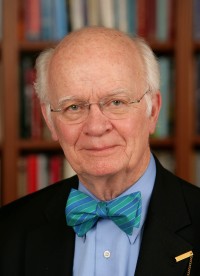Coded messages: A Lutheran cast of characters
I was an innocent Nebraska teen visiting Milwaukee when I saw my first musical, which I thought was about Oklahoma. But Andrea Most in Making Americans: Jews and the Broadway Musical (Harvard University Press) and David Schiff, who reviewed her book in the Times Literary Supplement (July 2), would say that I got the plot and scene of this Richard Rodgers and Oscar Hammerstein musical wrong. I also seem to have missed the point of such other musicals as South Pacific and The King and I. Most argues that these shows were coded contributions aimed at helping urban Jews assimilate. No, says Schiff; assimilation was already a Broadway plot as early as the 1920s, in plays like Abie’s Irish Rose. Hammerstein, son of a Presbyterian mother, had long “fit in.”
Most overreaches, says Schiff, when she calls attending musicals like Oklahoma! a “collective religious experience” that reenacted “a key sacrament of American Jews.” Rather, Rodgers and Hammerstein set their plays in places that New Yorkers would find exotic. Then in each one they offer a “show-within-a-show”—a “masked, ambiguous presentation” designed to serve a variety of purposes. For example, “For Jews, the contending cowboys and ranchers in Oklahoma! might stand for Galitzianers and Litvaks. For gay men, Lieutenant Cable in South Pacific was one of their own.” And, since these musicals keep being presented in goy spots like Fargo, “There was apparently something there for Methodist men and Irish Catholic women.” I also missed the ambiguity in South Pacific, which, says Schiff, both “gave moral instruction” and included a “peep show” as the female lead took an onstage shower.
That Jews “invented” the middle-class WASP America imaged in the cinema of the 1930s and the multicultural but not overtly Jewish world of the musicals of the ’40s and ’50s is a common theme. Where does that leave the rest of us, who welcome Jewish cultural contributions and ponder their meaning?
While Jewish pop culture was in its prime, many other Americans were also busy trying to fit in. For example, that part of American Catholicism and Lutheranism that had German roots was finding ways to identify itself apart from ancestral Germany.
The week I read the Schiff review someone alerted me to a Lutheran church’s Web site which provided a rather arbitrary listing of noteworthy Lutherans. It made me wonder what would be on screen and stage if the Lutherans—at least as numerous as the Jews—were to finish their assimilative work there.
Picture this company, for starters: Actors and actresses like Loni Anderson, Gary Cole, Ann-Margret, Elke Sommer, Sally Struthers, David Soul, Bruce Willis and Liv Ullman. (I think having a Scandinavian name was sufficient to qualify for “Lutheran” lists.) Authors include Rita Mae Brown, famous for her often hilarious lesbian plots, and Dr. Seuss (Theodore Geisel). Comedian Dana Carvey, “the Church Lady.” Entertainment journalist Mary Hart. Music-makers Kurt Elling, Jerry Hadley, Kris Kristofferson, Kurt Masur, Ethel Merman (born “Zimmermann”) and pianist Roger Williams. Poet Robert Bly. Sport figures Troy Aikman, Dale Earnhardt, Al Kaline, Tony Kubek, Tom Landry, Paul Molitor and Danny Wuerffel. Television’s Woody Boyd (Harrelson).
If “Jews” are to be seen as one people with one main scenario for stage and screen, how can we homogenize and put this Lutheran cast of characters to work there? To write the script and produce the show I’d call on and trust the shades of Rogers and Hammerstein. Curtain up!






